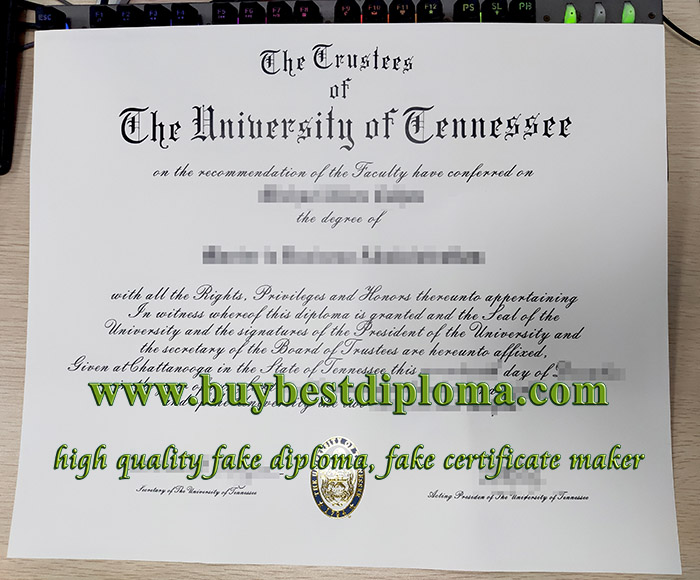
The University of Tennessee was founded as Blount College, named for Territorial Governor William Blount and chartered on September 10, 1794. By the legislature of the Southwest Territory sitting in Knoxville. Located in a single building in a frontier village of forty houses and two hundred residents. The college appears to have been an overambitious undertaking. The motivations of the founders remain unknown, but they probably followed the postrevolutionary trend of college founding. In order to create an educated citizenry for the new experiment in republican government. Although the first president was the local Presbyterian minister and seven of the first ten presidents were clergymen, the college was nonsectarian. How to duplicate a University of Tennessee diploma, order fake University of Tennessee degree. Buy fake diploma in Tennessee, fake US diploma.
How to buy a fake diploma in Tennessee
The college had a precarious existence. Only one student graduated, and the college depended on tuition for its financial support. In 1807 the state legislature rechartered the college as East Tennessee College and improved its financial prospects with a grant of public land. When the first president, Samuel Carrick, died in 1809, the college closed for a decade. East Tennessee College reopened in 1820, and, eight years later, moved to a new building on a hill outside town. By 1840 the institution had a new name, East Tennessee University, but its prospects continued to be uncertain. During the next twenty years, there were several presidents, and the faculty never numbered more than five. Approximately half of the 100 students were enrolled in the Preparatory Department. Which acted as a secondary school to prepare students for admission to the regular collegiate course.
During the Civil War the university closed; both armies successively occupied the buildings as hospitals, and by the war’s end, the surrounding area was bare of any vegetation. Thomas Humes, who became president of the university in 1865, had been a Union sympathizer and used his influence to secure $18,500 from the federal government as restitution for wartime damages. In 1869 the state legislature designated the university as the recipient of the funds provided by the Morrill Act of 1862. This federal act awarded states land grants or scrip for the establishment of colleges and universities that would teach agriculture, the mechanical arts, and military science. This boon to the university’s fortunes made it the recipient of the annual interest on some $400,000, about $24,000.
